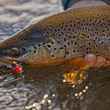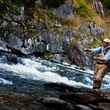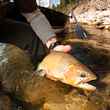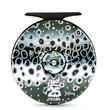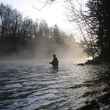The first farm raised salmon reared in land-based, fully contained system will soon hit the shelves of Canadian supermarkets. These salmon, which entered Vancouver Island-based Kuterra's aquaculture system in March of last year, are the first salmon of their kind to be harvested and sold for human consumption. The salmon harvested by Kuterra, owned by the 'Namgis First Nation, will be marketed by British Columbia seafood distributor Albion Seafood with the first harvest of Kuterra's salmon to be sold at Safeway stores across Canada.
The salmon farming industry, across the globe, has a checkered and filthy past. Marine-based salmon farms are known as incubators of disease, often requiring the salmon be fed antibiotics to control pathogens, and have also repeatedly been linked to spreading the very dangerous disease ISA (infectious salmon anemia) to waters of the Pacific Ocean. They litter the sea with waste, often leading to uncontrolled algal blooms, lead to the deaths of other marine mammals, serve as hot beds for sea lice and escaped farm fish -- ill-adapted to the rigors of the wild and bred for farm-friendly traits, not survivability -- pollute the gene pools of wild fish.
The repeatedly failing report card of the massive marine salmon farming industry is a driving force behind Kuterra's marketing efforts and many hope it is also behind Kuterra's guiding principles. Kuterra has indicated that its system strives to achieve the pinnacle of sustainability, operating without the use of chemicals -- no antibiotics or pesticides -- and with a 30% reduction in food use when compared to marine-based operations.










